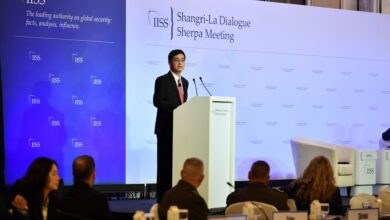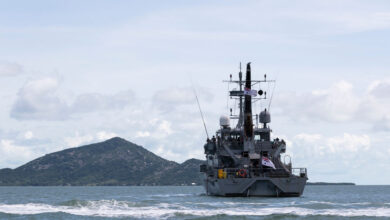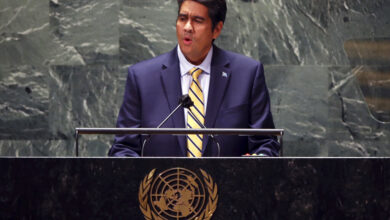Emperor Naruhito ascends throne in Japan with ‘sense of solemnity’

Reuters
Japanese Emperor Naruhito formally took up his post on May 1, 2019, a day after the abdication of his father, saying he felt a “sense of solemnity” but pledging to work as a symbol of the nation and the unity of its people.
Former Emperor Akihito and Empress Michiko stepped down after three decades in their roles in a brief and simple ceremony, with Akihito thanking the people of Japan and saying he prayed for peace.
Naruhito, 59, technically succeeded his father when the calendar date changed, but his ascension to the Chrysanthemum Throne was formalized in a midmorning ceremony, the first part of which his wife and other royal women could not attend.
Naruhito, the first emperor born after World War II and the first to be raised solely by his parents, expressed gratitude for their work and said he felt solemn at the thought of the burden he is taking on.
“I pledge that I will always think of the people, and while drawing close to them, fulfill my duties as a symbol of the Japanese state and the unity of the Japanese people in accordance with the constitution,” Naruhito, wearing a tailcoat and several large medals, said with a small smile.
“I sincerely hope for the happiness of the people and further progress of the country, and for world peace,” he said in the Imperial Palace’s Matsu no Ma, or Hall of Pine.
In the first stage of the ceremony, imperial chamberlains carried state and privy seals into the hall along with two of Japan’s Three Sacred Treasures — a sword and a jewel — which together with a mirror are symbols of the throne.
They are said to originate in ancient mythology.
Naruhito was flanked by his brother and heir, Crown Prince Akishino, during the ceremony, which lasted about five minutes.
His wife, Empress Masako, was not in the room in accordance with custom barring female royals, but for the first time a woman did watch — Satsuki Katayama, who was taking part as a member of Prime Minister Shinzo Abe’s cabinet.
Masako, wearing a floor-length white dress and a tiara, entered the room for the second part of the ceremony with the other adult royal women.
(Pictured: Japan’s Emperor Naruhito, foreground, Empress Masako, Crown Prince Akishino and Crown Princess Kiko attend a ritual called Kenji-to-Shokei-no-gi, a ceremony for inheriting the imperial regalia and seals, at the Imperial Palace in Tokyo, Japan, on May 1, 2019.)
Abe said Japan looked up to the emperor.
“We are determined to create, amidst the fast-changing international environment, a bright future for a proud Japan that is peaceful and full of hope,” he said.
U.S. President Donald Trump, who will be the new imperial couple’s first diplomatic test when he visits Japan later in May, extended his congratulations.
“As the Japanese people embark upon a new era, we will renew the strong bonds of friendship between our two countries,” he said in a prepared statement.
Chinese President Xi Jinping sent his best wishes, according to state news agency Xinhua, as did South Korean President Moon Jae-in, who said he hoped that Naruhito would, as his father did, “remember the pain of war and continue to take solid steps toward peace.”
“Given the backgrounds of Naruhito and his wife, Masako, a 55-year-old former diplomat — which include extended experience studying and living overseas — hopes are high they may be more international in their outlook and closer to the lives of many Japanese.
“The curtain has gone up on a new era that will be filled with hope,” said Hiroshi Takahashi, 78, outside his wagashi, ortraditional Japanese sweets shop.
“The new emperor has an admirable personality, and I hope he creates a fine royal household that expresses his own personality,” he said.
The last imperial succession in 1989 took place during mourning for Akihito’s father, Hirohito.”




